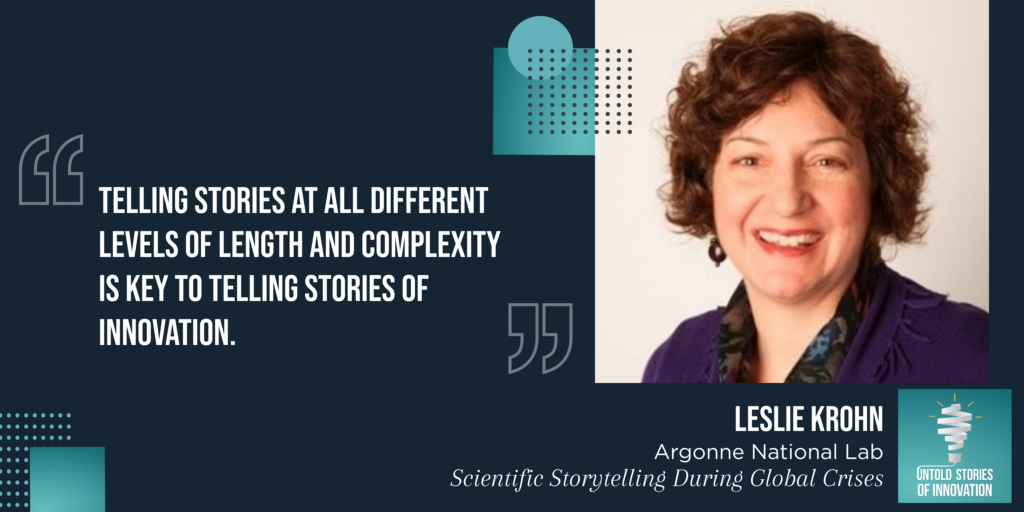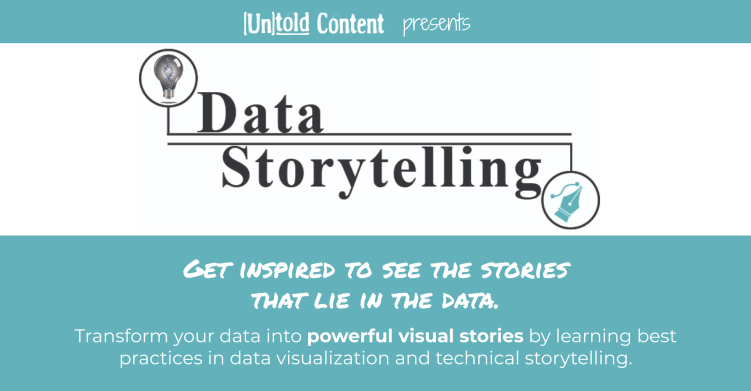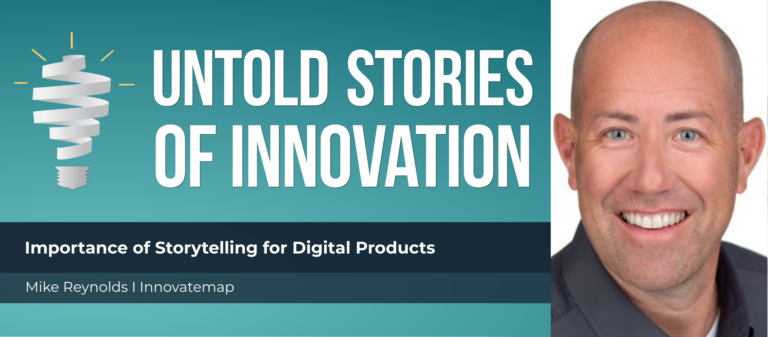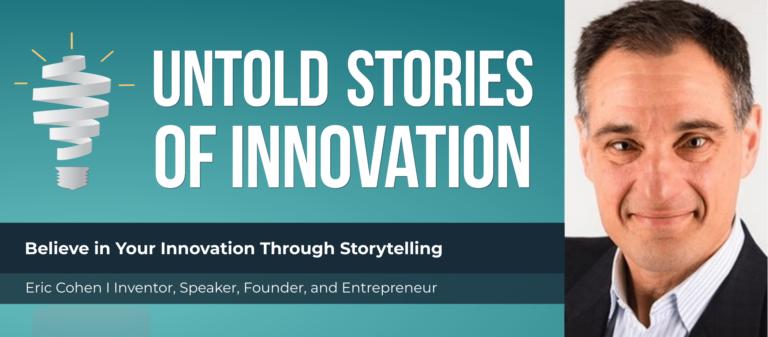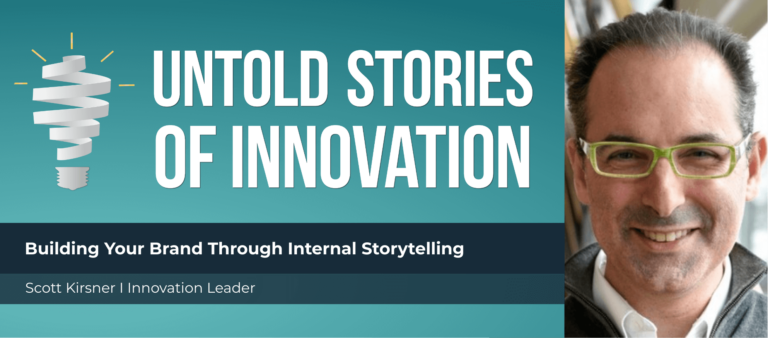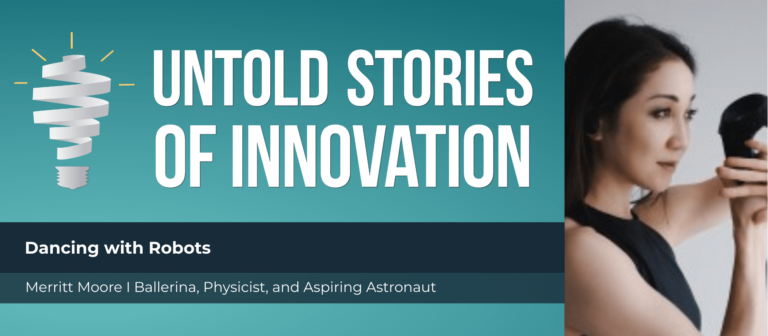Storytelling During Global Crises with Leslie Krohn of Argonne National Lab
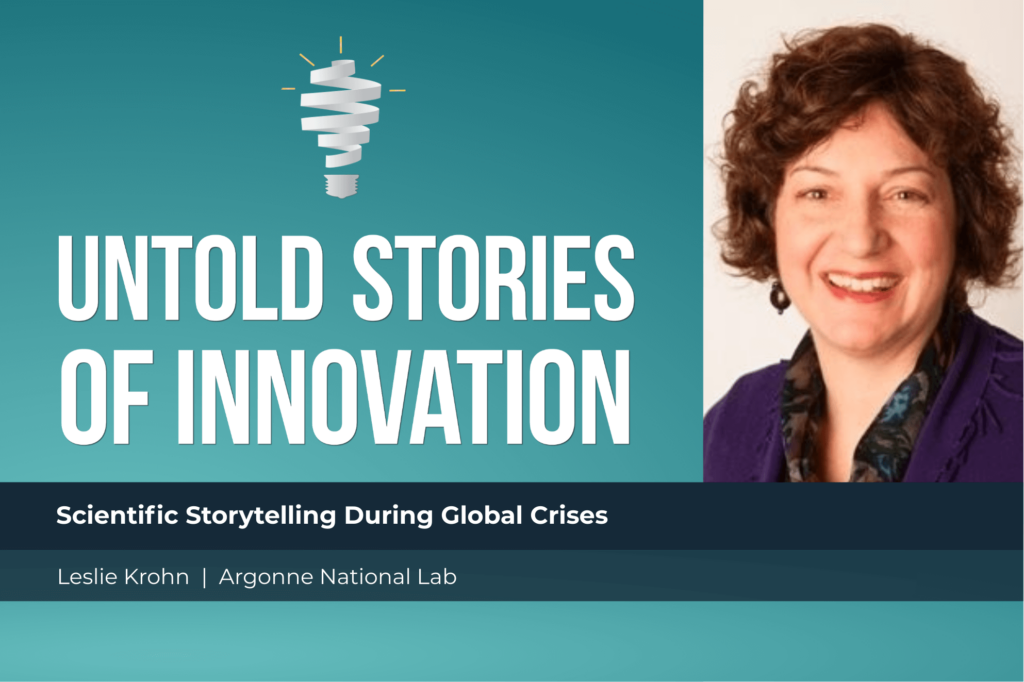
Storytelling During Global Crises - Untold Stories of Innovation
“Telling stories at all different levels of length and complexity is key to telling stories of innovation.” —Leslie Krohn, Chief Communications Officer at Argonne National Lab
From today’s episode you’ll learn:
Why do stories matter to the innovation process? What values can be instilled in innovators who share stories? How do innovation leaders inspire creators to tell and share their success and failure stories?
We spoke with Leslie Krohn, Chief Communications Officer at Argonne National Lab twice in 2020. First, at the beginning of the year before the COVID-19 pandemic began and then again in September, when it was already in full swing. Explore Argonne National Lab’s research initiatives during the pandemic and how storytelling can enhance the impact and relatability of scientific innovation. In this 2-part interview, Leslie gives updates on the COVID-19 research that is fueling global decision-making and global health.
Research links mentioned in this episode:
UChicago: COVID-19 Information From Our Experts
Pew Research: Americans give the U.S. low marks for its handling of COVID-19, and so do people in other countries

Leslie Krohn is the Chief Communications Officer and Director of Communications and Public Affairs at Argonne National Lab. Argonne’s scientists and engineers seek to answer the biggest questions facing humanity, from how to obtain affordable clean energy to protecting ourselves and our environment. As a communications leader, Leslie works to shape corporate culture and promote thought leadership in light of Argonne’s goal: to make an impact — from the atomic to the human to the global scale.
untoldcontent.com/trainings/data-storytelling-training
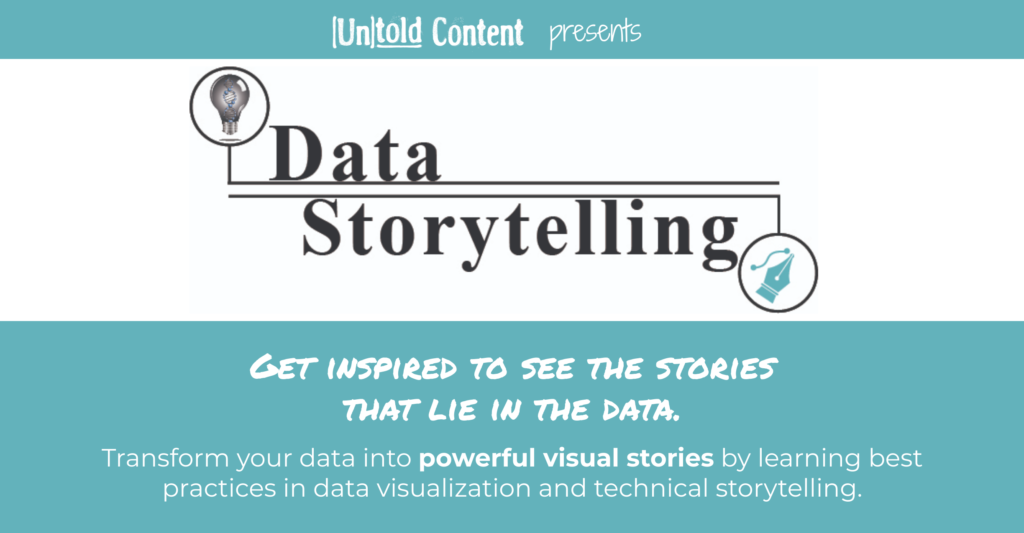 TRANSCRIPT – Storytelling During Global Crises
TRANSCRIPT – Storytelling During Global Crises
This episode, Storytelling During Global Crises is powered by data storytelling training from Untold Content and Data+Science. Transform your data into powerful visual stories by learning best practices in data visualization and technical storytelling. Whether you’re a PowerBI or a Tableau person—or just want to better communicate your data—this workshop will inspire you to see the stories that lie in the data. Learn more at https://untoldcontent.com/datastorytellingtraining/.
Katie: What you’re about to hear is two different episodes of The Untold Stories of Innovation podcast spliced together. I had the pleasure of speaking with Leslie Krohn two times in 2020. First, at the beginning of the year before the COVID-19 pandemic began and then again in September, when it was already in full swing and Argonne National Lab had been completing a lot of research initiatives around the pandemic in support of it. Listen in as we start by talking about COVID-19 in our conversation in September, and then stay tuned because we’ll insert the conversation that I had with Leslie back in the beginning of 2020 at the end of this episode. Enjoy.
Welcome to Untold Stories of Innovation, where we amplify untold stories of insight, impact and innovation. Powered by Untold Content, I’m your host, Katie Trauth Taylor. Back with us today on the podcast is Lesley Krohn. She is Chief Communications Officer of Argonne National Laboratory. Leslie, it is wonderful to have you back on the podcast. The world is quite different since you and I first spoke at the beginning of 2020.
Leslie: Indeed, it is.
Katie: Can you tell us about the changing times from Argonne’s perspective and how The National Lab is responding?
Leslie: Storytelling During Global Crises – Sure. I think that it is, you know, the word of the year is unprecedented. And it has been that. For communicators, it has been in some ways just an affirmation of our profession that we have never been more needed, more valued. And that’s been a wonderful thing. I think the folks on my team certainly really, really enjoy how much value they’ve been able to add over the course of the pandemic. So I think from Argonne’s perspective, the laboratory is a very physical campus. There’s a lot of activity that only can happen in the lab spaces in our facilities. And so when we hit the middle of March and realized that we needed to shelter in place and begin large-scale teleworking, the lab had to move into what we call minimum safe operations. You know, we’re keeping the lights on, we’re keeping very expensive facilities and equipment protected and safe. And so as we approach that, our first priority was the safety of our people and our facilities. So we very quickly — in the span of a few days, really — moved to large-scale teleworking. We went from having upwards of five thousand people on our campus on an average daily basis to about 400, 450. So a dramatic reduction in our onsite population. Had to shut a lot of things down safely. Had to equip 93 percent of our workforce to be able to be productive from home offices. We had to do a little shuffling of technology and share a number of chairs to get everybody ergonomically situated for what is — and I think will continue to be — a long haul of extended telework. So, you know, keeping our people safe at the lab and at home really has been our first priority. There was a certain amount of work that we knew we wanted to continue to do as the lab was in this minimum safe operations mode. And we’ve opened it up a little bit now to what we call limited operations. But among some of that high priority work was research that was directly contributed to the pandemic itself. And I can talk a little bit more about that later. Making sure that we had the appropriate researchers as well as the safety professionals who needed to be onsite if work is going on on campus, making sure that that was all set up for success, but layering in all the additional safety precautions that needed to be added in to our normal safety routines. You know, working as everyone is very familiar with face coverings now, with face shields, getting all that in place was really our focus at the beginning. And then as the pandemic has unfolded, different things become more challenging or less challenging. It took us a couple of weeks to figure out teleworking. But teleworking ceased to be sort of the conversation of the day. And as summer came and kids were out of school, childcare became a bigger topic. And as the pandemic — now we’re back into a return to school phase, which is another whole issue, a set of issues for our caregivers. So, you know, Argonne has had to respond to all of these different things. And again, I go back to what I started with, the communications, you know, sort of function has had to really step in and help make sure that everybody knows what’s going on and what we’re doing and when we’re doing it and how we expect people to do things. And so communication has just really been the big glue that held it all together as we’ve tried to keep people safe. So I think that’s one of the biggest ways that Argonne has responded. I think the second thing that I would mention really has to do with our commitment to contributing to the solutions to the pandemic, to keeping the science going. And I think there’s four different areas where Argonne has been contributing when it comes to the science of COVID. The first thing is how do you understand the virus? What does it look like structurally, you know, and how do receptors on the virus map to potential drug targets? And we do a lot of that imaging work with our big x-ray microscope that we talked about on the last podcast, the advanced photon source. So understanding that virus and adding that knowledge to the global scientific community is a big, big priority. We had a team of folks testing face covering material for effectiveness early on. A lot of that work was published back in the April-May timeframe as people were trying to figure out, well, how do I really face coverings and what’s the best material? We had another set of people focused on modeling the spread of the virus. And we actually have been advising both the city of Chicago, the county of Cook County in Illinois, and the governor of Illinois on how the virus is likely to spread if we, you know, put certain restrictions in place for the population, limiting gatherings or asking people to shelter in place, or if you see a 20 percent versus a 50 percent versus a 70 percent compliance on the masking and distancing regulation. So the epidemiological modeling work has been another big contribution from the laboratory. And the last one is the work our super computers are doing in helping everything related to therapeutics. So whether it’s vaccine-related or treatment-related, what are the ones out there that are most likely to be effective and narrow the trial and error that can be part of that exercise. You’ve got a lot of potential drug compounds. Which ones are most likely to work? Which ones do you want to put into trials quickly? So those are the two priorities — keeping our people safe and contributing to the COVID solutions. That’s really how Argonne has been responding six months in.
Katie: Well, thank you, first of all, for sharing that inside view and for explaining the four key areas of research and contribution that Argonne has been making to this pandemic. I am blown away by that. And I am — I know that everyone should be incredibly grateful and interested in this science. And one of the things that we talked about in our first episode was public distrust of science or misunderstanding of science. And I made that point and you actually countered to say, you know, recent research is showing that scientists are actually held in the highest regard in general in the general public according to some new research that just came out. And so what’s been shocking, you know, you said unprecedented as the kind of keyword for 2020. And I think what’s been the most concerning from my view to watch is the ways in which the general public has really expressed a lot of distrust among public health experts or towards the science and the medicine, medical facts behind this virus. And so could you share — I would love to know if you’ve — I’m sure you’ve been grappling with that as well, and especially, you know, as chief communications, as a leader are really trying to figure out, how do we communicate this research and these insights. Especially I’m thinking where you’re doing that modeling work to say, OK, if 50 percent of people wear their mask, here’s how spread will happen. And if only 20 percent, here’s how much more spread will happen. I imagine that that really has a direct impact, those kinds of models on helping people understand or get behind and support public health experts.
Leslie: Storytelling During Global Crises – Yeah, there’s no doubt about it. So I did, in advance of this, take a look at some very recent data. I happen to appreciate the work that Heart and Mind Strategies does. And they’ve been tracking American public opinion and trust in a variety of different institutions and organizations since the beginning of the pandemic. And I also looked at some other University of Chicago research, some Pew Research data. So when it comes to trust, it’s shifting. You know, since — in the last six months, trust is shifting. What I found interesting is that trust in medicine and science in particular was high. You know, kind of upper 50s in terms of a percentage of the population who have a reasonable doubt or a high amount of trust in science. That number is increasing. So the medical community, the scientific community is gaining in trust in the last six months. The other group that seems to be rising is employers. So employers, they were kind of more in the mid 30s in terms of what percentage of population trusts employers. But that number is going up.
Katie: Interesting.
Leslie: Storytelling During Global Crises – And they see employers doing the right thing. Putting protocols in place where they say, if you come on our campus — and Argonne has done this, we’ve published what we call the Argonne Health Pact. And it says, if you are on our campus, we expect you to distance, to wash your hands a lot, to stay home if you’re sick. You know, all those good behaviors. So when people see employers doing those kinds of things, trust rises. And we’re seeing that. We’re seeing employers take those right precautions. You think about all of the publicity the airlines have had on their cleaning procedures and all those kinds of — that’s helping increase trust in employers. You know, the government and different governmental agencies — nationally and globally — they were in the mid 40s. Higher level of trust, originally, than employers. But we see that falling. And there’s lots of media out there, and media is the other area where trust in media was in the low 20s and that’s falling as well. So that’s — those are what’s documented in some of the research that I’ve pulled, you know, to say trust is really shifting. What I think is interesting, in addition, is that trust in science and medicine, as you alluded to, has been stable for decades. It’s high. 50 plus percent of people trust science and medicine. And it’s been that way for a long, long, long, long time. So it’s increasing a little bit now, but it’s just holding steady, which is great. And I think the other thing is that Pew’s study in particular asks people, do you believe that these entities and these organizations are acting in the best interests of the public? And 80 plus percent believe science and medicine is acting in the best interests of the public. Not near those levels if you’re talking about employers or the media or some other institution.
Katie: That is so helpful.
Leslie: So I think in general, it is a great base for the lab to be communicating from. So when we go out there and we do a public lecture — and we did one in May on three of those four topics that I mentioned, we talked about the advanced photon source and imaging the virus and the epidemiological modeling, as well as how the supercomputers are helping with therapeutics. And that, you can kind of go out to the Argonne website and take a look at if you wanted to. But that, you know — we had an audience of like 900 people on that lecture, which was awesome. So people are hungry for the information, you know, and if you listen to the questions and you watch the chat, people, they’re just even hungry for more and more and more. So I think that, you know, there’s just a trust in science. And they’ve had nothing but a great stage to tell their stories on for, you know, for the last six months.
Katie: We will link the research articles that Leslie mentioned in the show notes for this episode. And I think that’ll be really interesting to dive into and look at if you’re interested in learning more about that. Tell us a little bit more — I love that you are hosting webinars, we can link to those as well. If you’d like to share certain resources on Argonne’s site or, you know, areas where we can be listening in and gleaning stories and insights from your scientists as well.
Leslie: Sure. Yeah, I’ll get you the link to the outloud lecture. And we have a spot on our website that is just our science related to COVID, and I can send you that link as well.
Katie: Wonderful. Well, Leslie, is there anything else you’d like to share about Argonne’s response and what we should all be paying attention to as innovators in the midst of this pandemic?
Leslie: Well, I think it’s interesting to think, too, about how the science and the research is evolving a little bit as we go through the crisis. You know, because science can be a slow, a methodical, a rigorous process — and not to say that it isn’t. But we just did a media interview the other day talking about the speed with which the scientific community, the pharmaceutical community are moving when they’re in pursuit of the vaccines and the therapeutic and the treatment options and things like that, you know. So there has been an incredible global eagerness to jump in and find funding and move quickly and share results.
Katie: Yes.
Leslie: I think that’s changed and shifted. And it’s all for the better. Scientific collaboration was always strong, I just think it’s even stronger now. So that all is also wonderful to see. Sort of on the downside, it’s kind of interesting how challenging it has been to do — you know, science is inherently a global enterprise, right? Global facilities, global communities of expertise, etc. And the lack of travel has sort of challenged that in a way that — let’s call it unprecedented. So I see the scientific community sort of trying to figure out, you know, how to compensate for that. So I think there’s some changes in how research is being done. And the other thing I think I noticed, you know, in this whole timeframe has to do with how much non-COVID science is still moving forward. It’s not like we hit the pause button on everything else. You know, just in the last two months, Argonne has been part of announcing sort of the national quantum internet back in July. And the Department of Energy in the White House announced five quantum centers and seven artificial intelligence centers just a few weeks ago. We’re doing groundbreaking ceremonies and ribbon cutting ceremonies on new facilities at the laboratory. So as much as you think everybody’s been focused on COVID, there’s a whole lot of non-COVID stuff that is proceeding as well. So, science is certainly evolving as we deal with the pandemic.
Katie: It’s so good to hear that. And I’m so — I’m grateful to have that insider look at how collaboration has become virtual. And I think, you know, international collaboration perhaps can be accelerated even faster now that everyone is virtual. So it’s just wonderful to hear those stories. And Leslie, I’m so grateful for this update. I can’t wait to share it with all of our listeners so that they can be tuning into those lectures and also learning more about trust and storytelling and information-sharing during the pandemic. Thank you so much for joining us again on the podcast.
Leslie: Oh, you’re very welcome.
Katie: Talk to you soon.
Leslie: OK. Take care.
Katie: Leslie, you have such an incredible background in communications, especially for scientific disciplines and organizations. I’m so grateful to have you on the podcast today.
Leslie: It is a pleasure to be here. Thanks for the invitation.
Katie: So I’d love to start by learning a little bit more about where your personal story of innovation began.
Leslie: I think that it all began early in my career. I was working for Anderson Consulting, which turned into Accenture and one of the things that I was tasked with was managing an internal meeting, a partner meeting. But it was in the mid-nineties and it was really the advent of the internet. And as a consulting organization, Accenture was trying to figure out how to convince and convey the fact, to their own employees, that they were leading in this innovative area called the internet. And so the managing partner said to me , “We’ve got to make people believe that we’re actually doing this stuff. We’re on the leading edge of it.” And so what we brought to that meeting, that event, was a lot of innovative techniques to get people to think differently about things. To convince them to inspire passion and belief. One of the things in particular that we did for that meeting was we used the partners’ own children to convey to them how the paradigm was shifting. And we interviewed these kids and we said, “What are computers to you?” And they’re like, “You mean like air, like electricity.” Three year olds were able to convey instantly how different the grownups needed to think about this new technology. I think that was really the beginning of it was when the internet hit early in my career it was like, “Whoa, that’s innovation. Things are different.”
Katie: It’s so interesting, too, to hear that perspective that the innovators did not necessarily see themselves as innovators. Is that something that you’ve come across throughout your career that there’s certain messaging or certain stories that are useful for helping employees see themselves as innovative?
Leslie: I think that’s true because it’s hard for people to see what they don’t know. If your experience is always of new and different and change, then you take that in stride. But if your experience is not, you look at that as differently. So I do think it is hard sometimes for innovators to see themselves as innovative. Also because innovators are always seven steps ahead of where you think they are as a communicator. You’re helping them tell today’s story, but a real innovator is already 10 years down the road.
Katie: That’s fascinating. So you’ve worked with so many incredible big companies, large innovative companies, Nielsen, Sarah Lee, GE, you’ve mentioned Accenture. Can you share with me and our listeners more insight into how storytelling made a difference in those different organizations? It sounds like you’ve always played a role as being sort of a Chief Marketing Communications and in so many ways that also involves storytelling. Could you share some stories around your work in those different organizations?
Leslie: I think they do all share similarities and my role has always been of counselor and advisor. And inevitably the organizations that I’m supporting want to be known, want to be recognized, want to be heard. And they want to be seen as different, they want to stand out. Storytelling is just a mechanism to make things memorable. People can recount stories better than facts and figures most of the time. And so I think that in any of the roles that I’ve been in, I try and employ classic storytelling techniques. You can adapt them to the situation. But I look for stories that have a beginning and a middle and an end. Once upon a time, the internet came along and this happened to it, and then this happened. You can talk about protagonists and antagonists — not necessarily people, but situations. And how can a technology be the protagonist against something like an environmental issue or concern? I think about conflict and resolution. So product marketing is often conflict and resolution. You’ve got a problem and you have a technology or an innovation that helps remove the problem. So I think storytelling just enables people to remember because they’re classic techniques that they’re used to. It’s how they learn, it’s how they were raised so it’s just employ those and it helps with the memorability of the message.
Katie: Yeah, that’s such an excellent point. I’m thinking too about the importance of storytelling to the practice of innovation, to innovation processes, to the success of the innovation team. Could you share your perspectives on why storytelling matters particularly to innovation?
Leslie: I can give you a story from Argonne that I think illustrates both the storytelling but also the importance to the organization. So Argonne is a national laboratory. We work on innovations generally speaking 10 years before they ever hit the mainstream. We worked on the electrochemistry in electric car batteries 10 years before the Chevy Volt came off the production line. There’s a story that is interesting to hear about a product that we call the Oleo Sponge. And if I think about the storytelling on this one, it definitely has a beginning and a middle and an end. It has a protagonist and the antagonist as I mentioned before. So sort of like in the beginning there was a piece of polyurethane foam, the kind that you and I are probably sitting on right now. And in and of itself, it’s cushy but that’s about it. And some of our scientists created a new material, a coating for that piece of polyurethane foam, and the properties of that coating are that it loves oil. So if you coat the foam in this new material and you put it in a situation — call it a pond that’s got some oil scum from motorboats — it will wick the oil right out of the water. And so you have the foam and it meets the coating and now you have this innovation called what we’ve dubbed it, the Oleo Sponge. And so now we have the hero is the sponge, the antagonist here is the oil, and we’ve got a solution that’s innovative. So for the laboratory, our job is now to transfer that technology to industry. So we need to be able to tell that story in a way that gets industry excited for it. So what kind of industries might be excited about it? The one that seemed the most obvious to us were environmental concerns. So it’s a product that industrial companies might need. They took the product and they tested it in a variety of different environments. One in particular that they did was an ocean test. And we took that product also down to the Dallas Earth X conference about two years ago. Which actually has both an industrial component to it but also a general public thing. And we demonstrated it. So people could walk up and down the aisle and see exactly how this Oleo Sponge works. They could do it themselves. But what was also fascinating is, as you demonstrate the innovation, people came up with other applications for the product. There were women who walked by and said, “Can I have one of them for my kitchen sink? I want to do dishes with that thing.” And we were like, “We hadn’t even thought of that.” And other people came by and said, “I’d like that for makeup. I want some of that on my face.” So I think the innovation — By telling the story in a memorable way to say, “Chronologically we started with this, we added that, we came up with this thing that’s new and it can do all these heroic things,” people remembered that and then the ideas started to fly about how else they could use it. So helped advance Argonne’s goals and helps the planet too. So it’s all good.
Katie: I love that story. In the past year at Untold Content, we have analyzed different innovation stories and it’s one of the — that analysis is one of the reasons why we started this podcast. One of the outcomes of that research was that we identified a lot of different story patterns and the one that you just shared, we’d sort of call it the surprise discovery. And there’s another one that I think of this might overlap with it, which is the perspiring innovator. So if there’s a particular challenge, if you continue to innovate against it, eventually you hope and anyhow it leads to breakthrough. But that one particularly is somewhat surprising because you start with this concept of, and this is something in your everyday life, it’s pretty typical polyurethane, we’re sitting on it now. And then you show this dynamic and very unique application for it. And it sort of draws listeners in and helps them understand in a different way.
Leslie: And I think there’s something else that I would add about that story. And if you think about the complexity of the materials development that went into this, you definitely are in the perspiring innovator zone. They work years and years to come up with the right formulations. However, when we went to tell the story, part of the communications journey is there were a lot of different audiences that were interested in hearing it. And we were particularly successful telling the Oleo Sponge at a different level of technical complexity and sophistication depending on the audience.
You can certainly start with a 24 page scientific paper published in a journal, which is appropriate for certain audience, but you also have to figure out how to tell that story to people who aren’t material scientists and who aren’t PhDs in science and who are business people who understand the application of it but not the chemical composition of it all the way down to the point where, and I think this was one of the things that I love most when I first came to Argonne, is there’s a ten second video of the Oleo Sponge there is not a word of narration, there’s not a word of text anywhere. It simply shows a beaker of water into which you pour oil that is colored blue so you can see it and you drop the sponge in and the oil all goes into the sponge. You tell that story without a single word. And so being able to tell a story at all those different levels of length and complexity is also a key thing about telling innovation stories. You got to be able to scale the story up or down to the audience.
Katie: Absolutely, and one of the issues I wanted to discuss with you on this episode is really about alignment, which involves getting buy-in or getting feedback from internal stakeholders, external stakeholders, collaborators, and really ensuring that the innovations and the prototypes and the research questions you’re asking are in alignment with the mission of the organization. And I would say at Argonne as well, I’m sure you’re also contemplating industry partnerships and how to solve real market needs in our community as well as societal needs that you hear as a public institution. So many different audiences at so many different learning and technical literacy levels. Can you share with me your thoughts on why alignment matters so much to the work of innovation and how when innovation story is not well aligned with different audience needs, how it’s so much greater risk for failure or not getting to that next stage of approval?
Leslie: Yeah. There’s two ways to look at the alignment issue. Certainly one is the customer needs and from a corporate industry perspective, you want to focus on things that there is market demand for. At the lab the mission is both serving industry need, but it’s also laying the foundation for decades of future innovation. And so there’s a certain amount of basic exploratory discovery science where you don’t exactly know what you’re looking for. And when you find things you’re not exactly sure what you’re going to use them for, but you need to do that work. Discovery is so essential to the national laboratories certainly and many other R&D institutions. I think that finding a home for the stories as you were telling them is a completely different kind of exercise. And so the laboratory here does work from basic discovery science to energy work, working with the grid and nuclear and renewables.
We have a big photon sciences sector that does testing for pharmaceutical compounds and all kinds of novel materials. We have super computing where we’re doing all kinds of data visualizations and crunching incredible amounts of data to figure out new treatments for diseases that are crippling to humanity right now. The question of how to tell an Argonne story and build an Argonne brand using that range in that diversity of stories was a different kind of a challenge. And with that we really said part of our mission is to discover. So we want to tell stories of discovery and every time we tell a story of discovery, we’re building the Argonne brand. We also knew we told stories of collaboration because a lot of times these innovations come about because of collaborations. A great example of that is our work in the battery space where we are partnering with many of the other national laboratories. We’re partnering with universities, we’re partnering with industry, and together through those collaborations they’re able to create leaps and bounds improvements in terms of energy density and cost and things of that nature. So if we tell those stories, we’re aligned with the brand and the reputation that we’re trying to build for the laboratory. There are certainly times before I think that people would come in and say, “That innovation is a little off strategy.” But to figure that out, we reframed how we told stories. We’re telling stories of collaboration, we’re telling stories of innovation, we’re telling stories too about the facilities and the scale of this national laboratory because it is — we can fit Wrigley Field inside one of the facilities that we have here. We’re operating at a scale that’s unprecedented almost anywhere. There are other national laboratories, certainly, but we had to just reframe how we created that alignment.
Katie: Absolutely. That makes sense. And you started with an overarching sort of universal concept of discovery and that then can apply across sectors and across scientific disciplines.
Leslie: Absolutely.
Katie: Could you speak to the role of storytelling, especially in scientific communications? And I’m thinking especially about some research lately around the death of expertise and that the average taxpayer’s misunderstandings of science or distrust of science and of expertise and even being able to sort of come together around what truth is, is a challenge these days societally. Could you speak to then why storytelling matters from that perspective, and if you have certain strategies that you sort of try to diffuse across Argonne and across scientists and the experts there to help the public understand what scientists are doing, why it matters and why we should trust in those efforts?
Leslie: You’re absolutely right. It’s documented that people’s trust of any kind of media is eroding, people’s understanding scientific acumen is lower. But the good news is that it’s also documented that people’s trust of scientists as spokespeople, as storytellers is still extraordinarily high. It’s on the top kind of three trusted sources of information. So there’s a wonderful base to build on there. I think that the key to communicating with the public is making your stories relatable. And so I frequently counsel folks that I’m working with to not talk about the molecule. Talk about why the molecule matters. And a lot of times it’s easy for people to focus on the technical stuff and not the “what’s in it for me.” And so that’s a classic communications principle. The audience needs to know why they should care, and it isn’t necessarily a scientist’s instinct to lead with that; they want to lead with the formula, the algorithm, and that’s okay. That’s the discovery. But what I’ve found and what I coach my team to do is tease that out of them. Why does this discovery matter? It’s about making the discovery relatable and being able to talk about it in terms that people understand. Like with the Oleo Sponge, you can talk extraordinarily technical about that. And you should talk at a level that a highly educated, science-interested person can understand, and at the level that a five year old can understand. And that doesn’t mean that you’re dumbing it down. To me, your communication is only effective if your message is received, and so you really have to scale how you talk about it. So I think that’s the key, is working with the subject matter experts to understand why it would matter. Where is this applicable, how can we connect this to something that people care about. We did an announcement over a year ago around some quantum technology, and I think the general population is still struggling with quantum and what is quantum physics and quantum mechanics and quantum networks and quantum computing. But when we were able to say, right now the integrity of communications between — inside a country, for instance, if you think about security or you think about warfare, you think about this integrity of communications inside of business with competitiveness and confidentiality and all that kind of stuff. This notion of unhackable networks was something that people understood, and all of a sudden you had their attention and you could then start to explain to them why this particular development in the quantum space was going to matter. Again, the lab is 10 years ahead of at least sort of where a lot of innovations end up showing up out in the outside world, but the people can understand that concept. And by hooking it into something that people could relate to, they’re like, “Okay, I get it.” And if that’s going to help us be more safe, more secure, then they’re interested.
Katie: Absolutely. So relatability and impact are really —
Leslie: Impact. Those are the two big words. Two big words I say all the time.
Katie: Why is that so difficult, do you think, especially in scientific disciplines?
Leslie: I think that part of it is that generally there’s a lot more discoveries to come after the one that you’re talking about particularly. And there’s no guarantee how many of those are going to… How they’ll come out.
Katie: Yeah. I had a scientist tell me once, he said, “I don’t like to do storytelling because when I was a child, when someone said to me, you’re telling stories, it meant you are lying.” Sometimes it can be an ingrained thing that scientists feel sort of cautious about over-exaggeration and so reliant on the data and the evidence that they can actually sort of miss the opportunity to make it relatable.
Leslie: I think that’s absolutely real. I hear frequently, “We don’t want to say that because that will sound like hyperbole, we’re exaggerating.” And so they do want to sort of stick to the data. But I think that there’s a middle ground a lot of times, and I do think it’s a communicator’s job to push a little bit to understand where the boundaries are. And sometimes they are not as close in as the scientist might want them to be, nor are they as far out as the communicator would want them to be. And so that is a lot of times just good, honest conversation and a reality check and that kind of stuff. That struggle is real in terms of wanting to not over-exaggerate what’s happening. And as I said, there’s so much runway between today’s discovery and the end use of an innovation that is very hard to predict. And that makes a lot of people uncomfortable, understandably.
Katie: And again, too, I keep — as you say that I keep thinking back to that overarching mission of discovery. And again, if you can find a universal truth and unite people around it, I think the public also once has that desire to teach our children to be discoverers, to be curious, to think outside the box as it were. And so finding that moment of relatability again, I think can help sort of bridge that challenge.
Leslie: I do think that curiosity as a value is inherent in every one of the scientists that I’ve worked with. They just want to know why. Why does this happen? Or why didn’t that happen? I expected this and it didn’t. And they also are inherently curious about, there’s got to be a better way. There’s got to be a better way to feed 10 billion people on a planet of our size. There’s got to be a better way to get the water on the planet to the dry places that need it. There’s got to be a better way to get fresh drinking water and the planet’s covered with so much of it. And that curiosity is what moves us forward as a society. It’s absolutely critical and children have that. They have it and I commend everybody who does all the work in the STEM fields to nurture that and bring that out and in children and grow their interest in science and how they think about themselves as someone who can be curious and explore and solve problems, because that’s what we need. We need a lot of that.
Katie: Yeah. Amen to that. I’d love to hear your advice to innovators, especially scientific innovators, around how they can better utilize stories to get buy-in for the curious ideas that they’re developing.
Leslie: I think we’ve mentioned them already, but I’ll summarize them. I think impact is really important. And that’s helping the scientists to understand that we need to tease that nugget out. It’s there and they always know it. It’s just not maybe front and center. And so focusing on the impact is crucial because the impact is what’s going to make people care. If it doesn’t have any impact, then people will pass that nugget by. So impact is really, really key. I think the relatability piece, the why it matters is a second piece of that. You can say you’re going to cure cancer, okay, fine. But you’ve got to relate it to people. So if you’re talking about prostate cancer, you’re talking about brothers and fathers and husbands and if you’re talking about Alzheimer you’re talking about people’s elder statesmen in their families. And that becomes the relatable nugget. They kind of conceptually understand Alzheimer’s or cancer, but the relatability is, how does it connect to them? And so there are two pieces there. And so sometimes there’s a whole lot of what ifs with the scientists to say, so would this be applicable in this situation? Would it be applicable in this other situation? And then you’re able to come up with a nugget. So I can talk about unhackable networks, okay, fine but in what context? So the impact and the relatability are part and parcel of what you need to anchor your story. And then I think that I would advise the scientists that they really have to be mindful of the jargon of the technical talk and they’ve got to put in a little bit of effort to scale that sophistication, the technical or scientific sophistication depending on who the audience is. So they may be presenting at a technical conference on Monday and they may be talking to the Wall Street Journal on Tuesday. And those are two different presentations, even though they can be talking about the same subject, the same impact, the same relatability. And so I advise them to put in that effort and try and scale their story appropriately for the audience. It’s kind of fun if you want to do an experiment. Take any two people and have one, pretend that they’re from the modern day era and have the other one, pretend that they’re from 1776 when the country was founded and have the one from the modern day era explain what a cell phone is. Without using words that somebody 300, 250 years ago would understand. It’s really, really hard.
Katie: Yes. A letter that floats through the air and immediately goes into your ear.
Leslie: Right. I would call somebody on my phone. Well, call them, they didn’t have calls. The calls they’ve got calling cards on a little business card and a butler brought it in on a tray. I think it’s a lot harder than anybody thinks. To tell scientific stories well with all respect for the rigor that goes into the science and the facts and making things relatable and understandable. It’s really, really hard work. And my hats off to all the people who love to do this because when you find scientific communicators, they are passionate about what they do.
Katie: Yes, and it seems the stakes are just getting higher and higher to be able to make science relatable and to reveal its impact so that organizations like Argonne will continue to be funded and industry will continue to invest research in that funding. And so I think it’s absolutely crucial. So as we wrap up, I’d love to hear your sort of take on, it’s 2020, what innovation story, mediums and methods do you think we’ll see this year and into the future? What new ways do you think scientists will be trying to communicate? For instance, there’s a pretty popular meme right now going around where as people finish up their dissertations, they dance their dissertation and put it on the internet. It’s kind of silly. It’s also fascinating sometimes to watch “dance your dissertations.” So obviously that one’s kind of a silly example, but I’ve seen comic strips and art installations to try to explain and make science relatable to the public. What do you think we might see into the future in that regard?
Leslie: I am not a fortune teller, I’m a storyteller. I don’t know. Although I can tell you, I do think that there are people doing some fascinating things and when you mentioned the art, I remember being at the British Museum in London and someone was trying to make a point about how much medicine people take in their life. And so they wove a piece of fabric, just some muslin type fabric, and they embedded in that fabric pills. So here’s two Advil for this headache and here’s a melatonin I took to sleep on an airplane and here’s what I took from my cough and my flu. But they had data behind this that showed what the average number of pills or medicines an individual took over an average lifespan. And to see that essentially sewn into a piece of cloth told the story of medicine over a lifetime that shows impact and that shows relatability. And that was art. That was not a scientific journal. I love those types of innovative ways to tell a story. No words required. Maybe there’s a little caption in the museum or something like that, but it stuck with me and even if it was years ago. So great stories will resonate. I don’t know what the new forms will be. I could never have predicted the rise of social media in my career so I’m not going to guess in the future but I’ll leave you with that example of a piece of scientific research communicated extraordinarily innovatively that stuck.
Katie: I love it. Thank you so much, Leslie. It’s been such an honor to talk with you.
Leslie: You’re very welcome.
You can listen to more episodes of Untold Stories of Innovation Podcast.
*Interviews are not endorsements of individuals or businesses.
